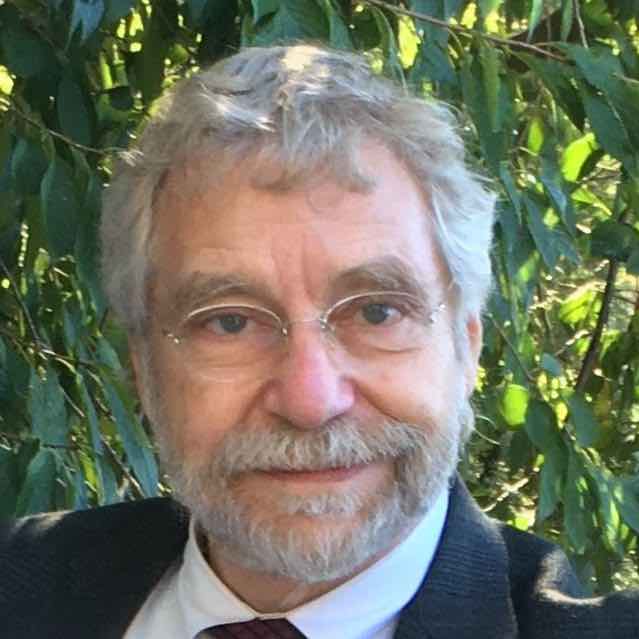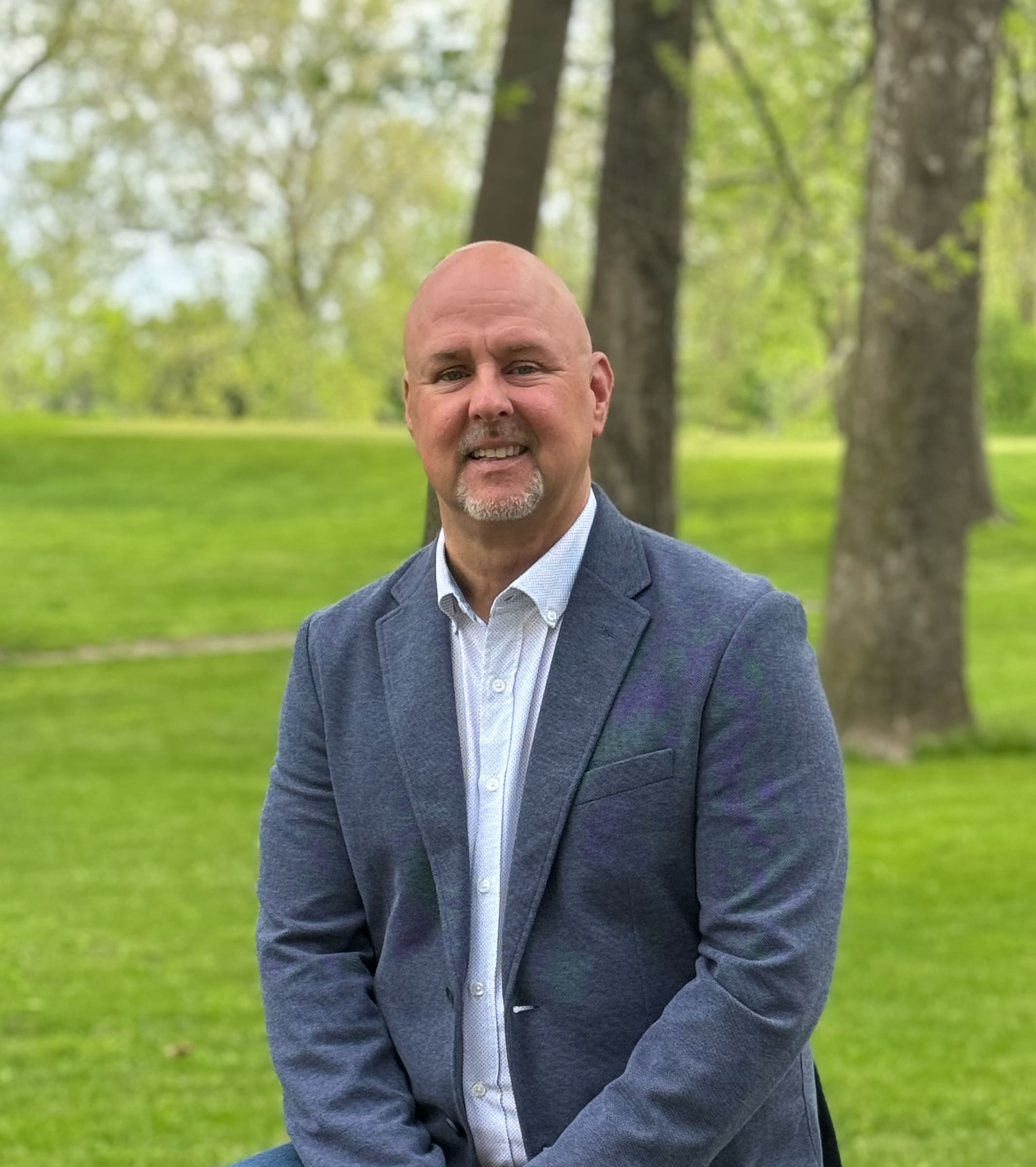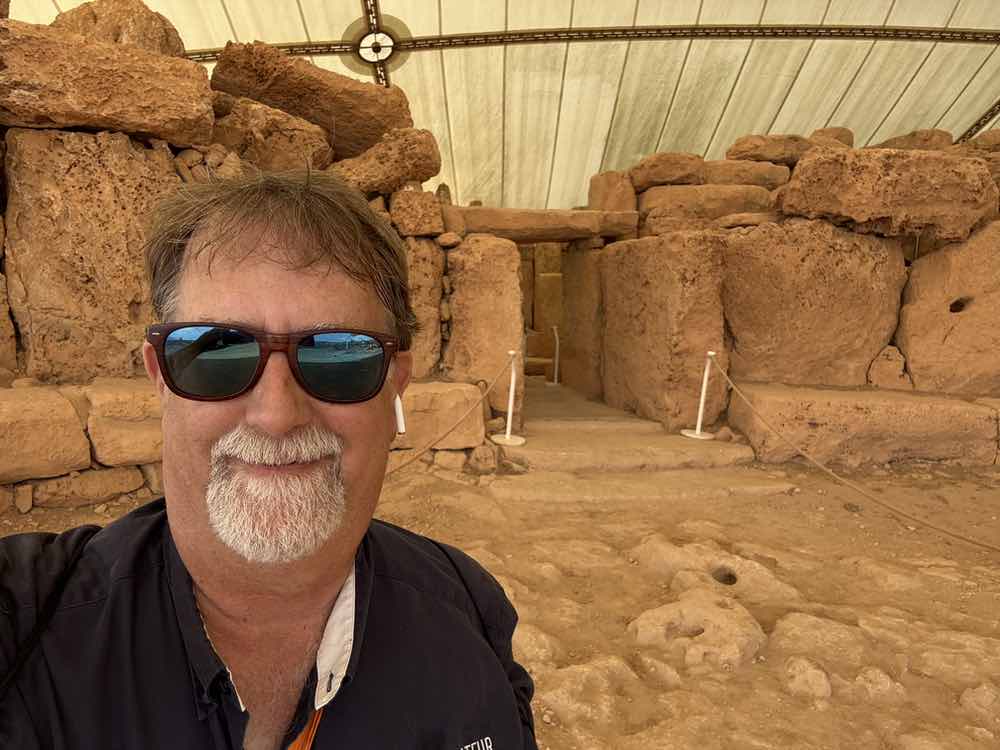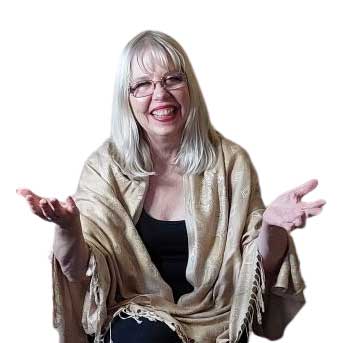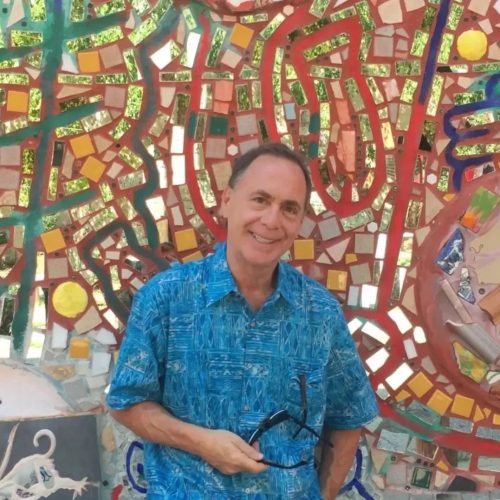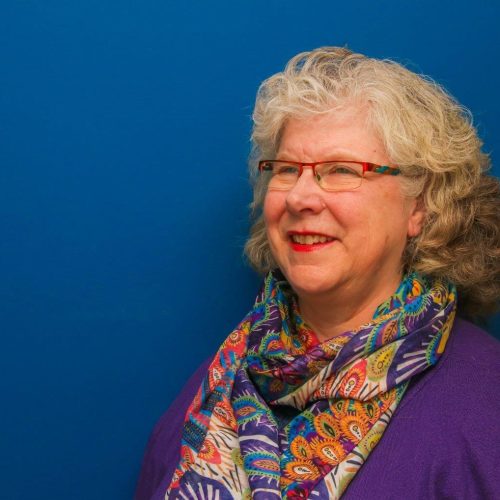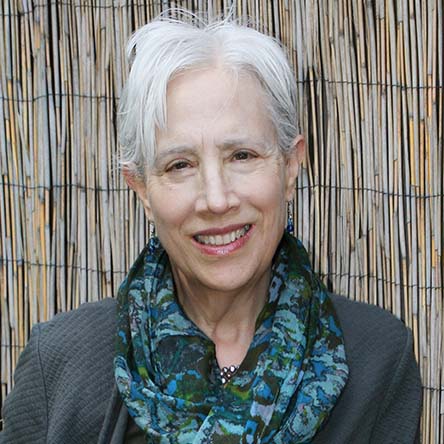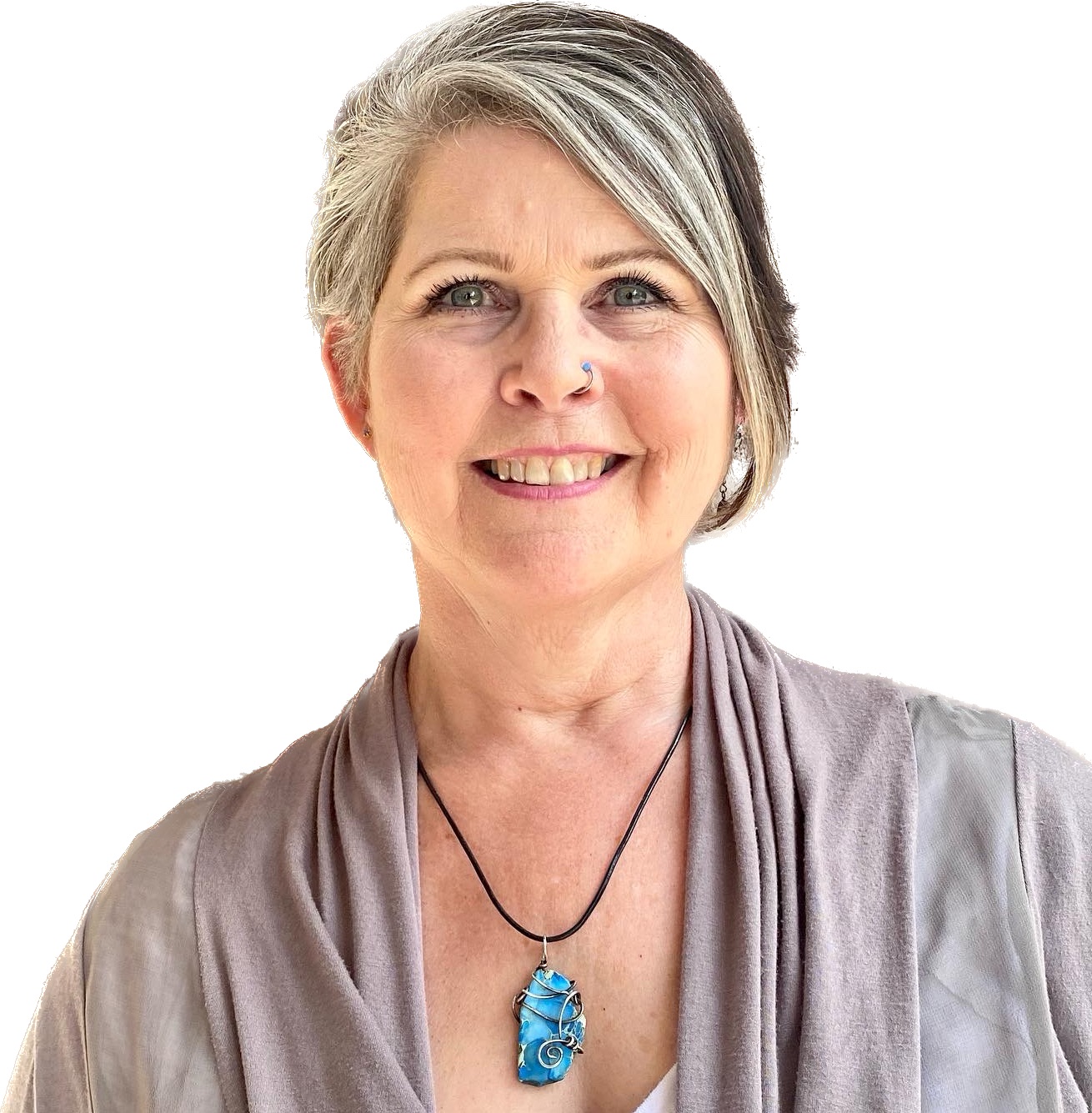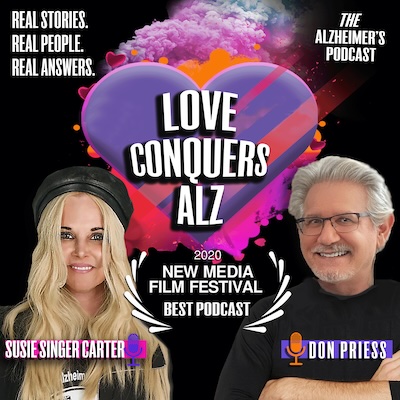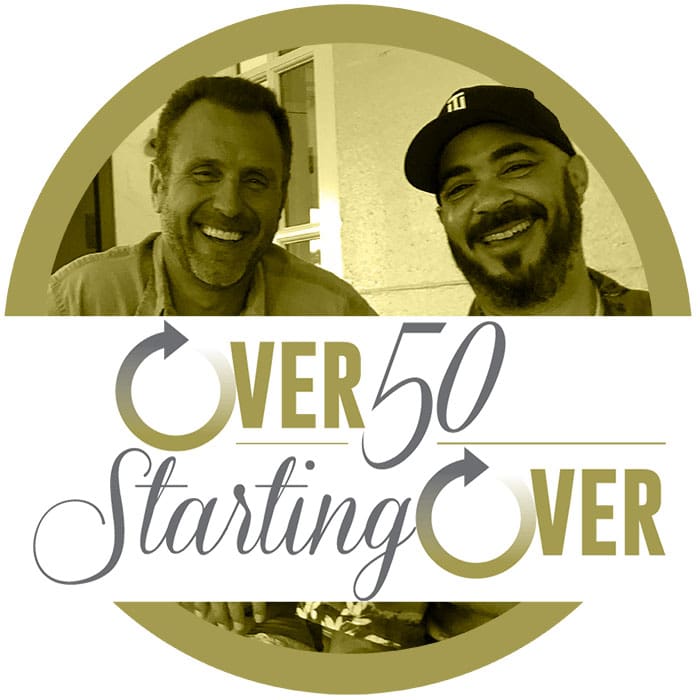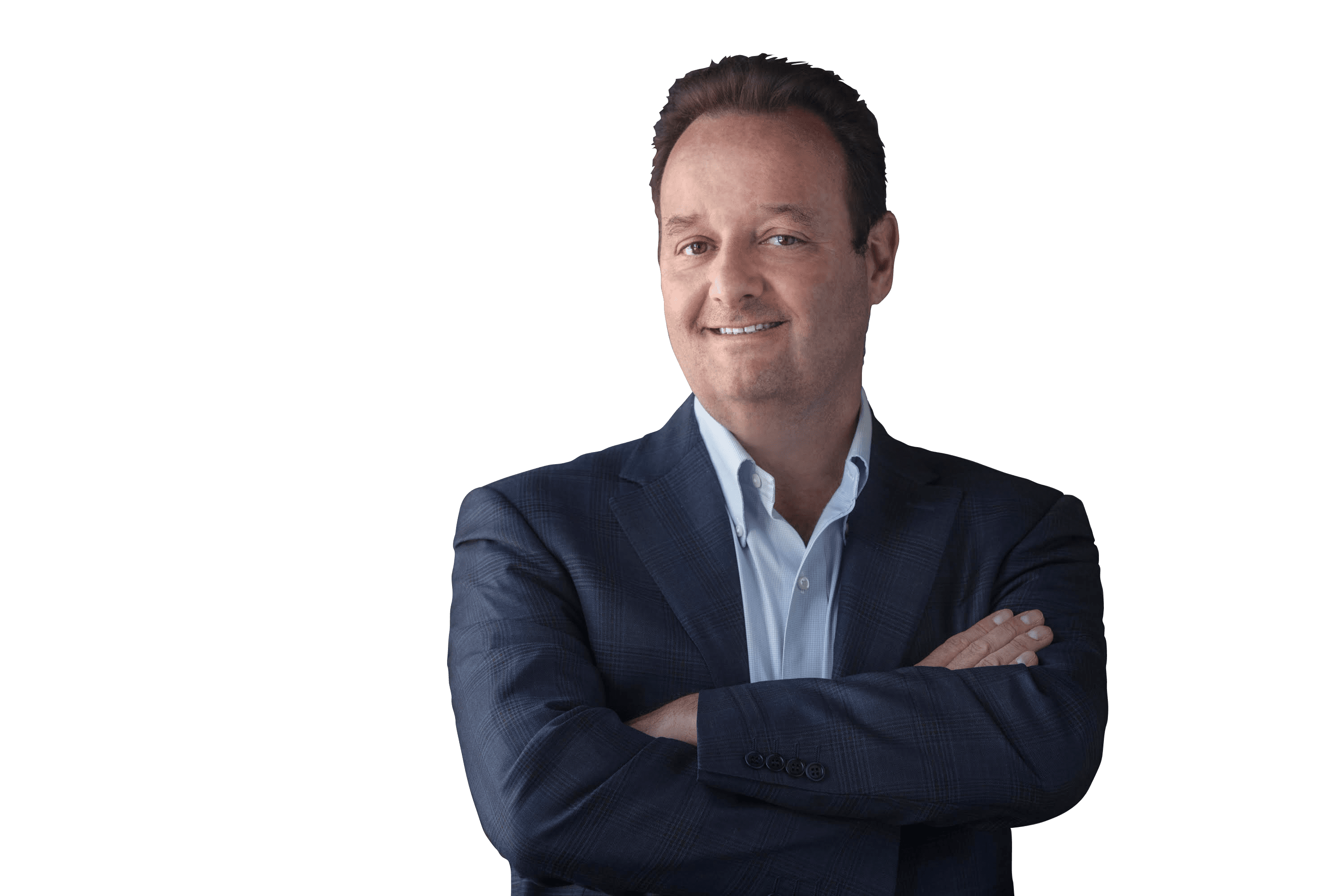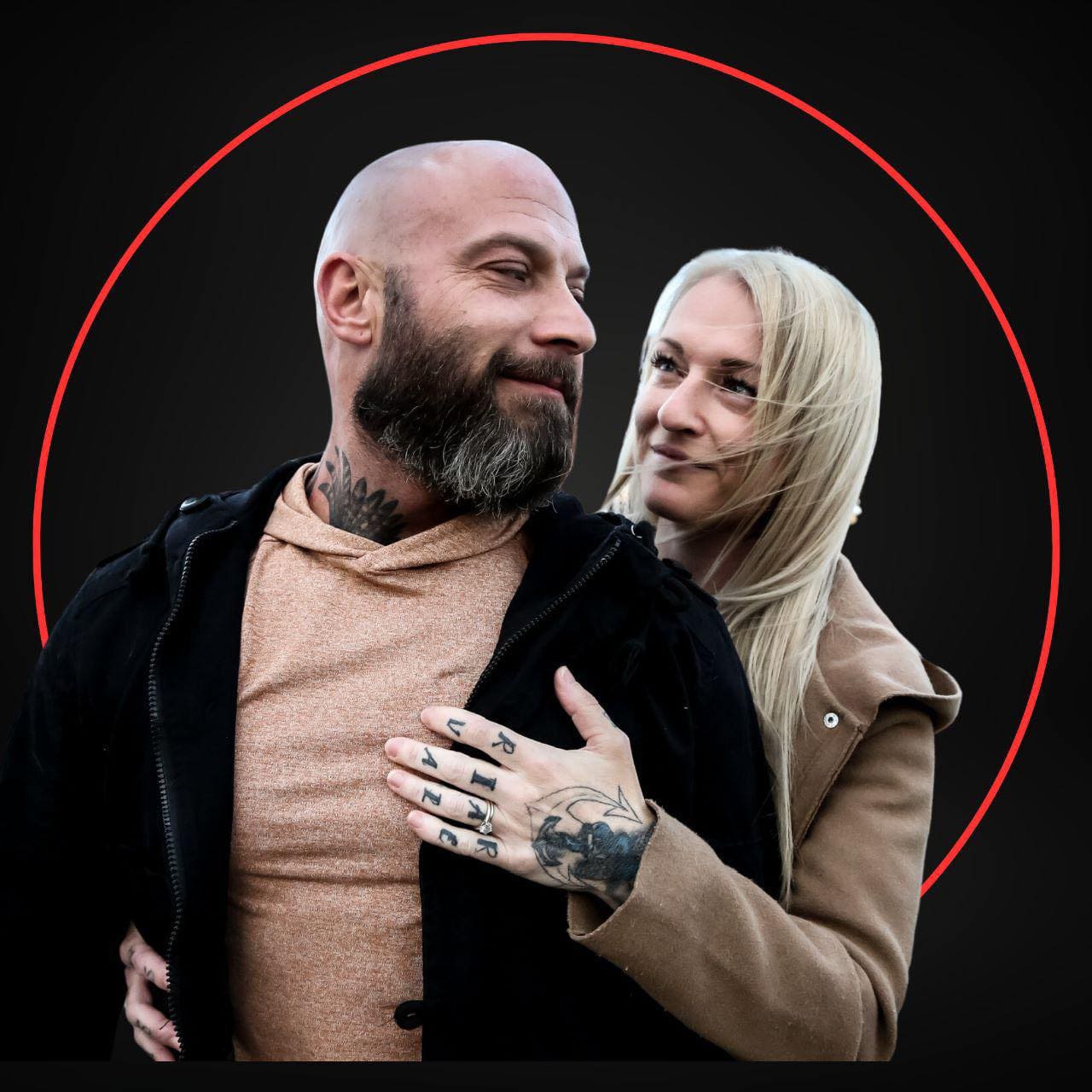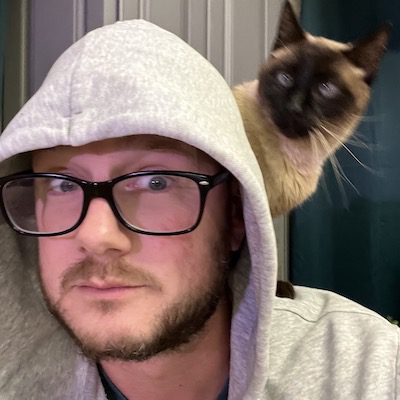Weird Thinking, Org. Design and Super Asymmetry
u201cYou think weird!u201d
n
Fred, my client, was being complimentary. He was explaining why he liked having me around. u201cNo really, I mean it. You see third and fourth level consequences that I would never think about. You understand multiple connections and five ways to solve a problem, when Iu2019m lucky to see one. You think weird,, and I like that.u201d
n
At that moment we were in the middle of integrating an acquisition, and people from both companies were already pretty freaked out. The two companies had different fiscal years and therefore different performance appraisal schedules. Synchronizing appraisal schedules seemed like a quick win to Fred. I suggested that accelerating some performance reviews and delaying others before the new organization was complete might be misinterpreted. It didnu2019t seem like rocket science, but he was too close to it until I spelled it out.
n
In fairness this wasnu2019t the first or last time I was told I think weird. I have an intuitive way of taking in information. Where some like to process in an order A-Z, 1-10, I am quite comfortable starting at 4 and 6 and not only inferring 5, but also 1,2 and 3. Sometimes if my brain and my mouth arenu2019t in sync, I start talking skipping those inferred numbers and strange connections and people respond with, u201cHuh?u201d
n
Luckily, I have learned (mostly) to slow down and specify inferences and unseen connections. My wife keeps me straight at home and a colleague, the late Dr. Richard Taylor, used to keep me straight at work.
n
Two kinds of thinking
n
n
I worked with groups on Innovation or continuous improvement initiatives. While the objectives of these two types of initiatives are different there are many similarities between them including a requirement to separate divergent thinking from convergent thinking.
n
The objective of divergent thinking is to generate a quantity of ideas. It employs intuitive connections, thinking in analogies, or contrarian thinking (u201cWhat is it NOT like?u201d). Brainstorming and Edward de Bonou2019s Six Hats are well-known techniques.
n
The objective of convergent thinking is the best idea . .u00a0 implemented. This invo9lves evaluation, risk assessment, measurement, and planning. Divergent thinking is much more prevalent in business. Managers and leaders learn to analyze, evaluate, measure, plan, and do
n
The key is not to mix them. Just as it is destructive during brainstorming to say, u201cThatu2019s a dumb idea,u201d it is equally destructive during implementation to say, u201chereu2019s another idea.u201d
n
Unthink
n
I recent read Dr. Eric Zabiegalskiu2019s book Unthink: All You Have to Do Is Nothing. u00a0Dr. Zabiegalskiu00a0 describes two mental processes u201cExplorationu201d and u201cExploitation.u201d These are roughly correlative to divergent and convergent thinking. Exploitative process is more common in business he says.u00a0 People learn how to take an idea and wring the most value from it to deliver profit. Explorative process is rarer. Explorers look for new and unserved needs, apply new technologies to novel uses, try things that have never been done before. Dr. Zabiegalski makes a strong case that as individuals and organizations we need to stop and use explorative thinking more.
n
High Performing Organizations
n
In 2002, I was a principal at Katzenbach Partners, a small McKinsey spinoff, started by Jon Katzenbach (the Wisdom of Teams guy) with two partners from McKinsey. The idea behind Katzenbachu2019s firm was to work at the intersection between strategy and organization, combining both content and process consulting. I worked at three firms who had this idea. It always sounds so great, but it never works. Content consultants are masters of convergent thinking. Process consultants stick around and implement more and are more likely to use and encourage clients to use both types of thinking.
n
For a firm offsite, I was asked to do a one hour presentation on High Performing Organizations. I was given a strong hint that McKinsey had done significant research in this arena. Reading Eric Zabiegalskiu2019s book led me to look up that old presentation.
n
Twenty-years later I was surprised by the congruence of my presentation with Dr. Zagiegalskiu2019s research. I summarized the research to date, by Tom Peters and Bob Waterman, Jim Collins, David Nadler, Warner Burke and George Litwin, Jay Galbraith, and Jon Katzenbach himself.
n
I pointed out that all the major organization models including the much vauntedu00a0 McKinsey High Performing Organization model and the evolving Katzenbach Partners model had several characteristics: 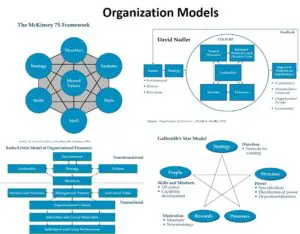
n
- n
- Strategy or goal driven
n
n
- n
- Not just structure, many elements:n
- n
- The formal and planned u2013 structure, systems, processes, management, leadership
- The informal and serendipitous u2013 networks, flexible units, culture
- Alignment and integration are critical success factors
n
n
n
n
n
n
These models are alignment models, where formal and informal elements are aligned, and work together. In Dr. Zabiegalskiu2019s words they are exploitation models. They operate like a high speed train on rails. I described that train on rails as a u201cbeautiful thing. . .u00a0 until it wasnu2019t. The disruptive forces of the 21st century required a different capability -innovation, the ability to know when and how to reinvent our organization.
n
 u00a0 I described how innovation was a critical capability that needed to be baked into organizations or aligned high performance would turn into disaster very quickly.
u00a0 I described how innovation was a critical capability that needed to be baked into organizations or aligned high performance would turn into disaster very quickly.
n

n
I described a high performing organization as a study in balance, between the critical capabilities of alignment and innovation. Dr. Zabiegalskiu2019s words, exploitation and exploration, better describe the thinking and acting processes than my words of alignment and innovation. Further he describes the end state as an ambidextrous organization, which is is the subject of his doctoral research and his first book. Whichever words we use the concept of balancing these two ways of thinking and acting individually and organizationally are consequential in our tumultuous times.
n
I write this post to explain the resonance I feel with Dr, Zabiegalskiu2019s work, not to imply any comparison between my small thought project and the depth or his doctoral research and not one but two books on the subject would be in anyway justified.
n
It all began with the Big Bang
n
u201cAnd now for something completely differentu201d as they used to say on Monty Python, and to demonstrate how truly weird my brain is:
n
When I was thinking about this I was also thinking about the American television comedy series, The Big Bang Theory.
n
For those from other countries or just not interested in silly situation comedies, this show is about the lives of four Caltech scientist researchers, a theoretical physicist, and experimental physicist, an astrophysicist, and a space engineer. These twenty-somethings are socially inept nerds, and the show centers on their attempts to grow up and find female companionship. The main character is Dr. Sheldon Cooper, a theoretical physicist looking to develop the Theory of Everything from a String Theory base. Sheldon is probably the smartest of the four and he knows it. He is also the most annoying and socially awkward and he doesnu2019t know that. He dreams of the Nobel Prize. Sheldonu2019s girlfriend is Dr. Amy Farah Fowler, a neuro biologist who is as obnoxiously nerdy as he is.
n
Spoiler Alert:
n
In the eleventh of twelve seasons, through a series of silly connections Sheldon and Amy hit upon a Theory of Super Asymmetry for which they win the Nobel prize in the finale of season twelve.
n
The Big Bang Theory was written with the greatest respect for actual science. The research and theories that were discussed are real and accurate, but Super Asymmetry is fiction. Itu2019s based upon Super Symmetry, which is is a documented theory of paired particles that explains what Einstein called u201cspooky movement at a distance,u201d unseen connections at the quantum level betweenu00a0 particles. This was first demonstrated by Dr. David Bohm and later verified with the Hadron supercollider at Cern, Switzerland.
n
But Super Asymmetry is the creation of Dr, David Saltzberg, the showu2019s science expert advisor. There is a lot of online fan banter that the character of Amy doesnu2019t deserve to share the Nobel because it is a theoretical physics discovery and Amy is a neurobiologist. (I know, I know, itu2019s TV show!) I remember some dialogue about how Sheldon was making the comparison of the Heisinger Uncertainty Principle and Schrodingeru2019s Cat being alive and dead at the same time. Then something his religious East Texas Mom believed that he thought untrue, but found could be true and untrue at the same time. Amy relayed how the synapses in the brain fired along the same neural pathways in the brain until suddenly they didnu2019t, making different connections between right or left hemispheres and the amygdala. Super Asymmetry is present in nature, in the brain, physical and quantum levels. u00a0It has a kind of sciencey truthiness, but its fake.
n
Well, says I, if there are connections at the quantum level, particle pairings (Super Symmetry -the real one) and nature embraces both symmetry and asymmetry, then Super Asymmetryu00a0 the fictional one) might be true. I wonder.
n
If Super Asymmetry were true then what is the neuroscience relationship between conscious, subconscious, and collective unconscious, u00a0and connections in the physical and quantum worlds, both symmetrical and asymmetrical?
n
How does that relate to balancing exploration and exploitation by causing our busy brains to stop to engage our intuition, Unthink, as it were. And if Individuals could do that then maybe they might build self-organizing ambidextrous organizations to do the same and we might get through the kind of earth-shaking change in store for us in this century.
n
Did I mention Iu2019m retired? ud83dude0a
n
Fred, youu2019re right. I think weird!
“,”tablet”:”
u201cYou think weird!u201d
n
Fred, my client, was being complimentary. He was explaining why he liked having me around. u201cNo really, I mean it. You see third and fourth level consequences that I would never think about. You understand multiple connections and five ways to solve a problem, when Iu2019m lucky to see one. You think weird,, and I like that.u201d
n
At that moment we were in the middle of integrating an acquisition, and people from both companies were already pretty freaked out. The two companies had different fiscal years and therefore different performance appraisal schedules. Synchronizing appraisal schedules seemed like a quick win to Fred. I suggested that accelerating some performance reviews and delaying others before the new organization was complete might be misinterpreted. It didnu2019t seem like rocket science, but he was too close to it until I spelled it out.
n
In fairness this wasnu2019t the first or last time I was told I think weird. I have an intuitive way of taking in information. Where some like to process in an order A-Z, 1-10, I am quite comfortable starting at 4 and 6 and not only inferring 5, but also 1,2 and 3. Sometimes if my brain and my mouth arenu2019t in sync, I start talking skipping those inferred numbers and strange connections and people respond with, u201cHuh?u201d
n
Luckily, I have learned (mostly) to slow down and specify inferences and unseen connections. My wife keeps me straight at home and a colleague, the late Dr. Richard Taylor, used to keep me straight at work.
n
Two kinds of thinking
n
n
I worked with groups on innovation or continuous improvement initiatives. While the objectives of these two types of initiatives are different there are many similarities between them including a requirement to separate divergent thinking from convergent thinking.
n
The objective of divergent thinking is to generate a quantity of ideas. It employs intuitive connections, thinking in analogies, or contrarian thinking (u201cWhat is it NOT like?u201d). Brainstorming and Edward de Bonou2019s Six Hats are well-known techniques.
n
The objective of convergent thinking is the best idea . . implemented. This invo9lves evaluation, risk assessment, measurement, and planning. Divergent thinking is much more prevalent in business. Managers and leaders learn to analyze, evaluate, measure, plan, and do
n
The key is not to mix them. Just as it is destructive during brainstorming to say, u201cThatu2019s a dumb idea,u201d it is equally destructive during implementation to say, u201chereu2019s another idea.u201d
n
Unthink
n
I recent read Dr. Eric Zabiegalskiu2019s book Unthink: All You Have to Do Is Nothing. Dr. Zabiegalski describes two mental processes u201cExplorationu201d and u201cExploitation.u201d These are roughly correlative to divergent and convergent thinking. Exploitative process is more common in business he says. People learn how to take an idea and wring the most value from it to deliver profit. Explorative process is rarer. Explorers look for new and unserved needs, apply new technologies to novel uses, try things that have never been done before. Dr. Zabiegalski makes a strong case that as individuals and organizations we need to stop and use explorative thinking more.
n
High Performing Organizations
n
In 2002, I was a principal at Katzenbach Partners, a small McKinsey spinoff, started by Jon Katzenbach (the Wisdom of Teams guy) with two partners from McKinsey. The idea behind Katzenbachu2019s firm was to work at the intersection between strategy and organization, combining both content and process consulting. I worked at three firms who had this idea. It always sounds so great, but it never works. Content consultants are masters of convergent thinking. Process consultants stick around and implement more and are more likely to use and encourage clients to use both types of thinking.
n
For a firm offsite, I was asked to do a one hour presentation on High Performing Organizations. I was given a strong hint that McKinsey had done significant research in this arena. Reading Eric Zabiegalskiu2019s book led me to look up that old presentation.
n
Twenty-years later I was surprised by the congruence of my presentation with Dr. Zagiegalskiu2019s research. I summarized the research to date, by Tom Peters and Bob Waterman, Jim Collins, David Nadler, Warner Burke and George Litwin, Jay Galbraith, and Jon Katzenbach himself.
n
I pointed out that all the major organization models including the much vaunted McKinsey High Performing Organization model and the evolving Katzenbach Partners model had several characteristics: 
n
- n
- Strategy or goal driven
n
n
- n
- Not just structure, many elements:n
- n
- The formal and planned u2013 structure, systems, processes, management, leadership
- The informal and serendipitous u2013 networks, flexible units, culture
- Alignment and integration are critical success factors
n
n
n
n
n
n
These models are alignment models, where formal and informal elements are aligned, and work together. In Dr. Zabiegalskiu2019s words they are exploitation models. They operate like a high speed train on rails. I described that train on rails as a u201cbeautiful thing. . . until it wasnu2019t. The disruptive forces of the 21st century required a different capability -innovation, the ability to know when and how to reinvent our organization.
n
 I described how innovation was a critical capability that needed to be baked into organizations or aligned high performance would turn into disaster very quickly.
I described how innovation was a critical capability that needed to be baked into organizations or aligned high performance would turn into disaster very quickly.
n

n
I described a high performing organization as a study in balance, between the critical capabilities of alignment and innovation. Dr. Zabiegalskiu2019s words, exploitation and exploration, better describe the thinking and acting processes than my words of alignment and innovation. Further he describes the end state as an ambidextrous organization, which is is the subject of his doctoral research and his first book. Whichever words we use the concept of balancing these two ways of thinking and acting individually and organizationally are consequential in our tumultuous times.
n
I write this post to explain the resonance I feel with Dr, Zabiegalskiu2019s work, not to imply any comparison between my small thought project and the depth or his doctoral research and not one but two books on the subject would be in anyway justified.
n
It all began with the Big Bang
n
u201cAnd now for something completely differentu201d as they used to say on Monty Python, and to demonstrate how truly weird my brain is:
n
When I was thinking about this I was also thinking about the American television comedy series, The Big Bang Theory.
n
For those from other countries or just not interested in silly situation comedies, this show is about the lives of four Caltech scientist researchers, a theoretical physicist, and experimental physicist, an astrophysicist, and a space engineer. These twenty-somethings are socially inept nerds, and the show centers on their attempts to grow up and find female companionship. The main character is Dr. Sheldon Cooper, a theoretical physicist looking to develop the Theory of Everything from a String Theory base. Sheldon is probably the smartest of the four and he knows it. He is also the most annoying and socially awkward and he doesnu2019t know that. He dreams of the Nobel Prize. Sheldonu2019s girlfriend is Dr. Amy Farah Fowler, a neuro biologist who is as obnoxiously nerdy as he is.
n
Spoiler Alert:
n
In the eleventh of twelve seasons, through a series of silly connections Sheldon and Amy hit upon a Theory of Super Asymmetry for which they win the Nobel prize in the finale of season twelve.
n
The Big Bang Theory was written with the greatest respect for actual science. The research and theories that were discussed are real and accurate, but Super Asymmetry is fiction. Itu2019s based upon Super Symmetry, which is is a documented theory of paired particles that explains what Einstein called u201cspooky movement at a distance,u201d unseen connections at the quantum level between particles. This was first demonstrated by Dr. David Bohm and later verified with the Hadron supercollider at Cern, Switzerland.
n
But Super Asymmetry is the creation of Dr, David Saltzberg, the showu2019s science expert advisor. There is a lot of online fan banter that the character of Amy doesnu2019t deserve to share the Nobel because it is a theoretical physics discovery and Amy is a neurobiologist. (I know, I know, itu2019s TV show!) I remember some dialogue about how Sheldon was making the comparison of the Heisinger Uncertainty Principle and Schrodingeru2019s Cat being alive and dead at the same time. Then something his religious East Texas Mom believed that he thought untrue, but found could be true and untrue at the same time. Amy relayed how the synapses in the brain fired along the same neural pathways in the brain until suddenly they didnu2019t, making different connections between right or left hemispheres and the amygdala. Super Asymmetry is present in nature, in the brain, physical and quantum levels. It has a kind of sciencey truthiness, but its fake.
n
Well, says I, if there are connections at the quantum level, particle pairings (Super Symmetry -the real one) and nature embraces both symmetry and asymmetry, then Super Asymmetry the fictional one) might be true. I wonder.
n
If Super Asymmetry were true then what is the neuroscience relationship between conscious, subconscious, and collective unconscious, and connections in the physical and quantum worlds, both symmetrical and asymmetrical?
n
How does that relate to balancing exploration and exploitation by causing our busy brains to stop to engage our intuition, Unthink, as it were. And if Individuals could do that then maybe they might build self-organizing ambidextrous organizations to do the same and we might get through the kind of earth-shaking change in store for us in this century.
n
Did I mention Iu2019m retired? ud83dude0a
n
Fred, youu2019re right. I think weird!
“,”phone”:”
u201cYou think weird!u201d
n
Fred, my client, was being complimentary. He was explaining why he liked having me around. u201cNo really, I mean it. You see third and fourth level consequences that I would never think about. You understand multiple connections and five ways to solve a problem, when Iu2019m lucky to see one. You think weird,, and I like that.u201d
n
At that moment we were in the middle of integrating an acquisition, and people from both companies were already pretty freaked out. The two companies had different fiscal years and therefore different performance appraisal schedules. Synchronizing appraisal schedules seemed like a quick win to Fred. I suggested that accelerating some performance reviews and delaying others before the new organization was complete might be misinterpreted. It didnu2019t seem like rocket science, but he was too close to it until I spelled it out.
n
In fairness this wasnu2019t the first or last time I was told I think weird. I have an intuitive way of taking in information. Where some like to process in an order A-Z, 1-10, I am quite comfortable starting at 4 and 6 and not only inferring 5, but also 1,2 and 3. Sometimes if my brain and my mouth arenu2019t in sync, I start talking skipping those inferred numbers and strange connections and people respond with, u201cHuh?u201d
n
Luckily, I have learned (mostly) to slow down and specify inferences and unseen connections. My wife keeps me straight at home and a colleague, the late Dr. Richard Taylor, used to keep me straight at work.
n
Two kinds of thinking
n
n
I worked with groups on innovation or continuous improvement initiatives. While the objectives of these two types of initiatives are different there are many similarities between them including a requirement to separate divergent thinking from convergent thinking.
n
The objective of divergent thinking is to generate a quantity of ideas. It employs intuitive connections, thinking in analogies, or contrarian thinking (u201cWhat is it NOT like?u201d). Brainstorming and Edward de Bonou2019s Six Hats are well-known techniques.
n
The objective of convergent thinking is the best idea . . implemented. This invo9lves evaluation, risk assessment, measurement, and planning. Divergent thinking is much more prevalent in business. Managers and leaders learn to analyze, evaluate, measure, plan, and do
n
The key is not to mix them. Just as it is destructive during brainstorming to say, u201cThatu2019s a dumb idea,u201d it is equally destructive during implementation to say, u201chereu2019s another idea.u201d
n
Unthink
n
I recent read Dr. Eric Zabiegalskiu2019s book Unthink: All You Have to Do Is Nothing. Dr. Zabiegalski describes two mental processes u201cExplorationu201d and u201cExploitation.u201d These are roughly correlative to divergent and convergent thinking. Exploitative process is more common in business he says. People learn how to take an idea and wring the most value from it to deliver profit. Explorative process is rarer. Explorers look for new and unserved needs, apply new technologies to novel uses, try things that have never been done before. Dr. Zabiegalski makes a strong case that as individuals and organizations we need to stop and use explorative thinking more.
n
High Performing Organizations
n
In 2002, I was a principal at Katzenbach Partners, a small McKinsey spinoff, started by Jon Katzenbach (the Wisdom of Teams guy) with two partners from McKinsey. The idea behind Katzenbachu2019s firm was to work at the intersection between strategy and organization, combining both content and process consulting. I worked at three firms who had this idea. It always sounds so great, but it never works. Content consultants are masters of convergent thinking. Process consultants stick around and implement more and are more likely to use and encourage clients to use both types of thinking.
n
For a firm offsite, I was asked to do a one hour presentation on High Performing Organizations. I was given a strong hint that McKinsey had done significant research in this arena. Reading Eric Zabiegalskiu2019s book led me to look up that old presentation.
n
Twenty-years later I was surprised by the congruence of my presentation with Dr. Zagiegalskiu2019s research. I summarized the research to date, by Tom Peters and Bob Waterman, Jim Collins, David Nadler, Warner Burke and George Litwin, Jay Galbraith, and Jon Katzenbach himself.
n
I pointed out that all the major organization models including the much vaunted McKinsey High Performing Organization model and the evolving Katzenbach Partners model had several characteristics: 
n
- n
- Strategy or goal driven
n
n
- n
- Not just structure, many elements:n
- n
- The formal and planned u2013 structure, systems, processes, management, leadership
- The informal and serendipitous u2013 networks, flexible units, culture
- Alignment and integration are critical success factors
n
n
n
n
n
n
These models are alignment models, where formal and informal elements are aligned, and work together. In Dr. Zabiegalskiu2019s words they are exploitation models. They operate like a high speed train on rails. I described that train on rails as a u201cbeautiful thing. . . until it wasnu2019t. The disruptive forces of the 21st century required a different capability -innovation, the ability to know when and how to reinvent our organization.
n
 I described how innovation was a critical capability that needed to be baked into organizations or aligned high performance would turn into disaster very quickly.
I described how innovation was a critical capability that needed to be baked into organizations or aligned high performance would turn into disaster very quickly.
n

n
I described a high performing organization as a study in balance, between the critical capabilities of alignment and innovation. Dr. Zabiegalskiu2019s words, exploitation and exploration, better describe the thinking and acting processes than my words of alignment and innovation. Further he describes the end state as an ambidextrous organization, which is is the subject of his doctoral research and his first book. Whichever words we use the concept of balancing these two ways of thinking and acting individually and organizationally are consequential in our tumultuous times.
n
I write this post to explain the resonance I feel with Dr, Zabiegalskiu2019s work, not to imply any comparison between my small thought project and the depth or his doctoral research and not one but two books on the subject would be in anyway justified.
n
It all began with the Big Bang
n
u201cAnd now for something completely differentu201d as they used to say on Monty Python, and to demonstrate how truly weird my brain is:
n
When I was thinking about this I was also thinking about the American television comedy series, The Big Bang Theory.
n
For those from other countries or just not interested in silly situation comedies, this show is about the lives of four Caltech scientist researchers, a theoretical physicist, and experimental physicist, an astrophysicist, and a space engineer. These twenty-somethings are socially inept nerds, and the show centers on their attempts to grow up and find female companionship. The main character is Dr. Sheldon Cooper, a theoretical physicist looking to develop the Theory of Everything from a String Theory base. Sheldon is probably the smartest of the four and he knows it. He is also the most annoying and socially awkward and he doesnu2019t know that. He dreams of the Nobel Prize. Sheldonu2019s girlfriend is Dr. Amy Farah Fowler, a neuro biologist who is as obnoxiously nerdy as he is.
n
Spoiler Alert:
n
In the eleventh of twelve seasons, through a series of silly connections Sheldon and Amy hit upon a Theory of Super Asymmetry for which they win the Nobel prize in the finale of season twelve.
n
The Big Bang Theory was written with the greatest respect for actual science. The research and theories that were discussed are real and accurate, but Super Asymmetry is fiction. Itu2019s based upon Super Symmetry, which is is a documented theory of paired particles that explains what Einstein called u201cspooky movement at a distance,u201d unseen connections at the quantum level between particles. This was first demonstrated by Dr. David Bohm and later verified with the Hadron supercollider at Cern, Switzerland.
n
But Super Asymmetry is the creation of Dr, David Saltzberg, the showu2019s science expert advisor. There is a lot of online fan banter that the character of Amy doesnu2019t deserve to share the Nobel because it is a theoretical physics discovery and Amy is a neurobiologist. (I know, I know, itu2019s TV show!) I remember some dialogue about how Sheldon was making the comparison of the Heisinger Uncertainty Principle and Schrodingeru2019s Cat being alive and dead at the same time. Then something his religious East Texas Mom believed that he thought untrue, but found could be true and untrue at the same time. Amy relayed how the synapses in the brain fired along the same neural pathways in the brain until suddenly they didnu2019t, making different connections between right or left hemispheres and the amygdala. Super Asymmetry is present in nature, in the brain, physical and quantum levels. It has a kind of sciencey truthiness, but its fake.
n
Well, says I, if there are connections at the quantum level, particle pairings (Super Symmetry -the real one) and nature embraces both symmetry and asymmetry, then Super Asymmetry the fictional one) might be true. I wonder.
n
If Super Asymmetry were true then what is the neuroscience relationship between conscious, subconscious, and collective unconscious, and connections in the physical and quantum worlds, both symmetrical and asymmetrical?
n
How does that relate to balancing exploration and exploitation by causing our busy brains to stop to engage our intuition, Unthink, as it were. And if Individuals could do that then maybe they might build self-organizing ambidextrous organizations to do the same and we might get through the kind of earth-shaking change in store for us in this century.
n
Did I mention Iu2019m retired? ud83dude0a
n
Fred, youu2019re right. I think weird!
“}},”slug”:”et_pb_text”}” data-et-multi-view-load-tablet-hidden=”true” data-et-multi-view-load-phone-hidden=”true”>
“You think weird!”
Fred, my client, was being complimentary. He was explaining why he liked having me around. “No really, I mean it. You see third and fourth level consequences that I would never think about. You understand multiple connections and five ways to solve a problem, when I’m lucky to see one. You think weird,, and I like that.”
At that moment we were in the middle of integrating an acquisition, and people from both companies were already pretty freaked out. The two companies had different fiscal years and therefore different performance appraisal schedules. Synchronizing appraisal schedules seemed like a quick win to Fred. I suggested that accelerating some performance reviews and delaying others before the new organization was complete might be misinterpreted. It didn’t seem like rocket science, but he was too close to it until I spelled it out.
In fairness this wasn’t the first or last time I was told I think weird. I have an intuitive way of taking in information. Where some like to process in an order A-Z, 1-10, I am quite comfortable starting at 4 and 6 and not only inferring 5, but also 1,2 and 3. Sometimes if my brain and my mouth aren’t in sync, I start talking skipping those inferred numbers and strange connections and people respond with, “Huh?”
Luckily, I have learned (mostly) to slow down and specify inferences and unseen connections. My wife keeps me straight at home and a colleague, the late Dr. Richard Taylor, used to keep me straight at work.
Two kinds of thinking
I worked with groups on innovation or continuous improvement initiatives. While the objectives of these two types of initiatives are different there are many similarities between them including a requirement to separate divergent thinking from convergent thinking.
The objective of divergent thinking is to generate a quantity of ideas. It employs intuitive connections, thinking in analogies, or contrarian thinking (“What is it NOT like?”). Brainstorming and Edward de Bono’s Six Hats are well-known techniques.
The objective of convergent thinking is the best idea . . implemented. This invo9lves evaluation, risk assessment, measurement, and planning. Divergent thinking is much more prevalent in business. Managers and leaders learn to analyze, evaluate, measure, plan, and do
The key is not to mix them. Just as it is destructive during brainstorming to say, “That’s a dumb idea,” it is equally destructive during implementation to say, “here’s another idea.”
Unthink
I recent read Dr. Eric Zabiegalski’s book Unthink: All You Have to Do Is Nothing. Dr. Zabiegalski describes two mental processes “Exploration” and “Exploitation.” These are roughly correlative to divergent and convergent thinking. Exploitative process is more common in business he says. People learn how to take an idea and wring the most value from it to deliver profit. Explorative process is rarer. Explorers look for new and unserved needs, apply new technologies to novel uses, try things that have never been done before. Dr. Zabiegalski makes a strong case that as individuals and organizations we need to stop and use explorative thinking more.
High Performing Organizations
In 2002, I was a principal at Katzenbach Partners, a small McKinsey spinoff, started by Jon Katzenbach (the Wisdom of Teams guy) with two partners from McKinsey. The idea behind Katzenbach’s firm was to work at the intersection between strategy and organization, combining both content and process consulting. I worked at three firms who had this idea. It always sounds so great, but it never works. Content consultants are masters of convergent thinking. Process consultants stick around and implement more and are more likely to use and encourage clients to use both types of thinking.
For a firm offsite, I was asked to do a one hour presentation on High Performing Organizations. I was given a strong hint that McKinsey had done significant research in this arena. Reading Eric Zabiegalski’s book led me to look up that old presentation.
Twenty-years later I was surprised by the congruence of my presentation with Dr. Zagiegalski’s research. I summarized the research to date, by Tom Peters and Bob Waterman, Jim Collins, David Nadler, Warner Burke and George Litwin, Jay Galbraith, and Jon Katzenbach himself.
I pointed out that all the major organization models including the much vaunted McKinsey High Performing Organization model and the evolving Katzenbach Partners model had several characteristics: 
- Strategy or goal driven
- Not just structure, many elements:
- The formal and planned – structure, systems, processes, management, leadership
- The informal and serendipitous – networks, flexible units, culture
- Alignment and integration are critical success factors
These models are alignment models, where formal and informal elements are aligned, and work together. In Dr. Zabiegalski’s words they are exploitation models. They operate like a high speed train on rails. I described that train on rails as a “beautiful thing. . . until it wasn’t. The disruptive forces of the 21st century required a different capability -innovation, the ability to know when and how to reinvent our organization.
 I described how innovation was a critical capability that needed to be baked into organizations or aligned high performance would turn into disaster very quickly.
I described how innovation was a critical capability that needed to be baked into organizations or aligned high performance would turn into disaster very quickly.

I described a high performing organization as a study in balance, between the critical capabilities of alignment and innovation. Dr. Zabiegalski’s words, exploitation and exploration, better describe the thinking and acting processes than my words of alignment and innovation. Further he describes the end state as an ambidextrous organization, which is is the subject of his doctoral research and his first book. Whichever words we use the concept of balancing these two ways of thinking and acting individually and organizationally are consequential in our tumultuous times.
I write this post to explain the resonance I feel with Dr, Zabiegalski’s work, not to imply any comparison between my small thought project and the depth or his doctoral research and not one but two books on the subject would be in anyway justified.
It all began with the Big Bang
“And now for something completely different” as they used to say on Monty Python, and to demonstrate how truly weird my brain is:
When I was thinking about this I was also thinking about the American television comedy series, The Big Bang Theory.
For those from other countries or just not interested in silly situation comedies, this show is about the lives of four Caltech scientist researchers, a theoretical physicist, and experimental physicist, an astrophysicist, and a space engineer. These twenty-somethings are socially inept nerds, and the show centers on their attempts to grow up and find female companionship. The main character is Dr. Sheldon Cooper, a theoretical physicist looking to develop the Theory of Everything from a String Theory base. Sheldon is probably the smartest of the four and he knows it. He is also the most annoying and socially awkward and he doesn’t know that. He dreams of the Nobel Prize. Sheldon’s girlfriend is Dr. Amy Farah Fowler, a neuro biologist who is as obnoxiously nerdy as he is.
Spoiler Alert:
In the eleventh of twelve seasons, through a series of silly connections Sheldon and Amy hit upon a Theory of Super Asymmetry for which they win the Nobel prize in the finale of season twelve.
The Big Bang Theory was written with the greatest respect for actual science. The research and theories that were discussed are real and accurate, but Super Asymmetry is fiction. It’s based upon Super Symmetry, which is is a documented theory of paired particles that explains what Einstein called “spooky movement at a distance,” unseen connections at the quantum level between particles. This was first demonstrated by Dr. David Bohm and later verified with the Hadron supercollider at Cern, Switzerland.
But Super Asymmetry is the creation of Dr, David Saltzberg, the show’s science expert advisor. There is a lot of online fan banter that the character of Amy doesn’t deserve to share the Nobel because it is a theoretical physics discovery and Amy is a neurobiologist. (I know, I know, it’s TV show!) I remember some dialogue about how Sheldon was making the comparison of the Heisinger Uncertainty Principle and Schrodinger’s Cat being alive and dead at the same time. Then something his religious East Texas Mom believed that he thought untrue, but found could be true and untrue at the same time. Amy relayed how the synapses in the brain fired along the same neural pathways in the brain until suddenly they didn’t, making different connections between right or left hemispheres and the amygdala. Super Asymmetry is present in nature, in the brain, physical and quantum levels. It has a kind of sciencey truthiness, but its fake.
Well, says I, if there are connections at the quantum level, particle pairings (Super Symmetry -the real one) and nature embraces both symmetry and asymmetry, then Super Asymmetry the fictional one) might be true. I wonder.
If Super Asymmetry were true then what is the neuroscience relationship between conscious, subconscious, and collective unconscious, and connections in the physical and quantum worlds, both symmetrical and asymmetrical?
How does that relate to balancing exploration and exploitation by causing our busy brains to stop to engage our intuition, Unthink, as it were. And if Individuals could do that then maybe they might build self-organizing ambidextrous organizations to do the same and we might get through the kind of earth-shaking change in store for us in this century.
Did I mention I’m retired? 😊
Fred, you’re right. I think weird!
The post Weird Thinking, Org. Design and Super Asymmetry appeared first on Wisdom from Unusual Places.
Originally Published on https://wisdomfromunusualplaces.com/blog/




